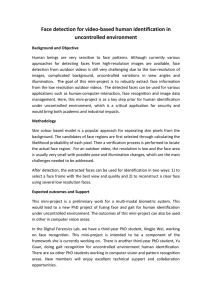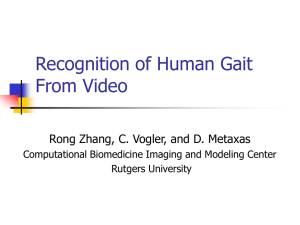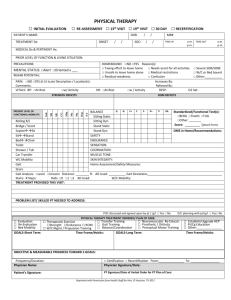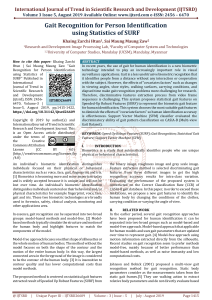Human Identification through Gait Recognition
advertisement
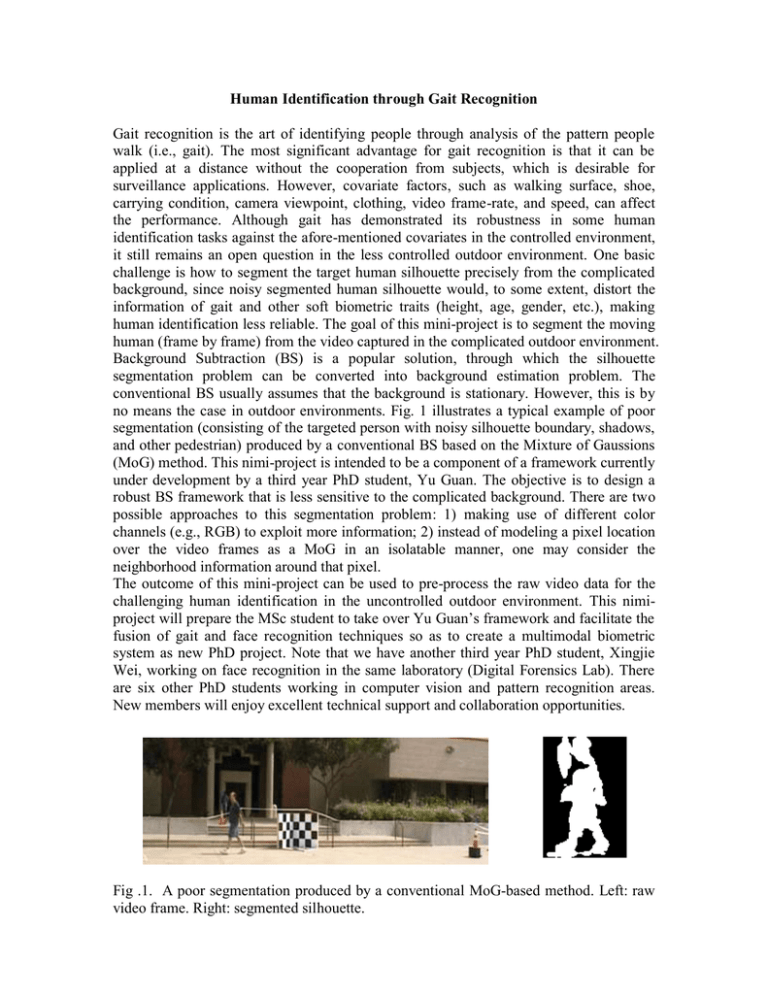
Human Identification through Gait Recognition Gait recognition is the art of identifying people through analysis of the pattern people walk (i.e., gait). The most significant advantage for gait recognition is that it can be applied at a distance without the cooperation from subjects, which is desirable for surveillance applications. However, covariate factors, such as walking surface, shoe, carrying condition, camera viewpoint, clothing, video frame-rate, and speed, can affect the performance. Although gait has demonstrated its robustness in some human identification tasks against the afore-mentioned covariates in the controlled environment, it still remains an open question in the less controlled outdoor environment. One basic challenge is how to segment the target human silhouette precisely from the complicated background, since noisy segmented human silhouette would, to some extent, distort the information of gait and other soft biometric traits (height, age, gender, etc.), making human identification less reliable. The goal of this mini-project is to segment the moving human (frame by frame) from the video captured in the complicated outdoor environment. Background Subtraction (BS) is a popular solution, through which the silhouette segmentation problem can be converted into background estimation problem. The conventional BS usually assumes that the background is stationary. However, this is by no means the case in outdoor environments. Fig. 1 illustrates a typical example of poor segmentation (consisting of the targeted person with noisy silhouette boundary, shadows, and other pedestrian) produced by a conventional BS based on the Mixture of Gaussions (MoG) method. This nimi-project is intended to be a component of a framework currently under development by a third year PhD student, Yu Guan. The objective is to design a robust BS framework that is less sensitive to the complicated background. There are two possible approaches to this segmentation problem: 1) making use of different color channels (e.g., RGB) to exploit more information; 2) instead of modeling a pixel location over the video frames as a MoG in an isolatable manner, one may consider the neighborhood information around that pixel. The outcome of this mini-project can be used to pre-process the raw video data for the challenging human identification in the uncontrolled outdoor environment. This nimiproject will prepare the MSc student to take over Yu Guan’s framework and facilitate the fusion of gait and face recognition techniques so as to create a multimodal biometric system as new PhD project. Note that we have another third year PhD student, Xingjie Wei, working on face recognition in the same laboratory (Digital Forensics Lab). There are six other PhD students working in computer vision and pattern recognition areas. New members will enjoy excellent technical support and collaboration opportunities. Fig .1. A poor segmentation produced by a conventional MoG-based method. Left: raw video frame. Right: segmented silhouette.

